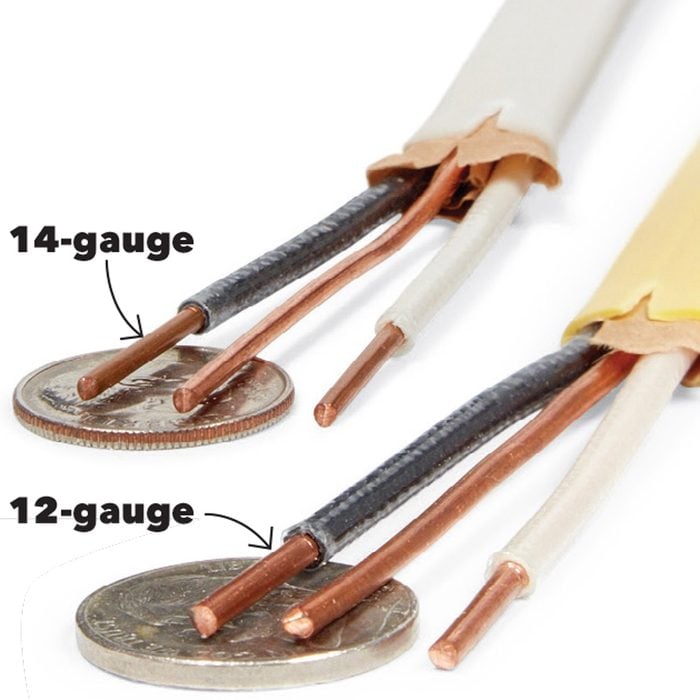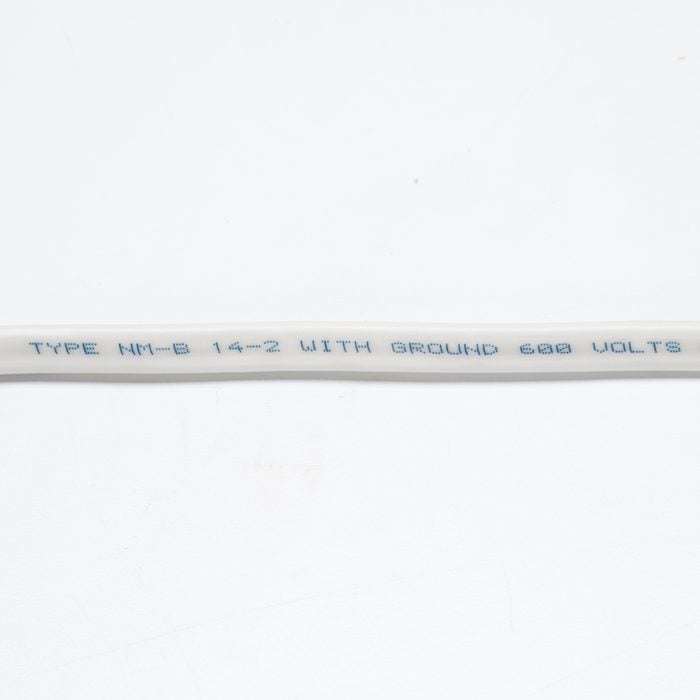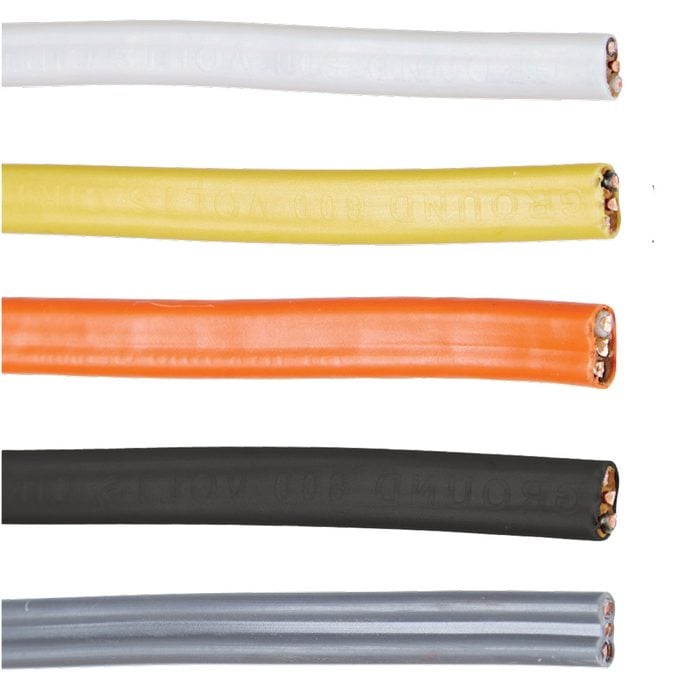
Electrical Cable Types: The Basics
The wire and cable aisle at your home center can be a pretty confusing place. We’ll teach you how to identify different electrical cable types and their uses, and how to determine the size of individual wires and their purposes. You’ll be able to cut through the confusion, get exactly what you need and ensure that your wiring is safe.
Even if you have years of wiring experience, there are always a few tricks you may not know. We worked with two master electricians to gather these tips for easier home electrical wiring.

Cable vs. Wire
People often use these terms interchangeably, but there’s a difference:
- Cable is an assembly of two or more wires in a single jacket.
- Wires are the individual insulated or bare conductors inside the jacket.

Wire Gauge
Wires come in different sizes/gauges to work with the amperage of the circuit in which they’re used. It’s counterintuitive, but the larger the number, the smaller the wire.
The most common sizes you’ll find in residential work are 14-gauge and 12-gauge. Larger appliances such as electric stoves, electric water heaters, electric dryers and central air units will often use 10-, 8- or even 6-gauge wire.
If you’re adding an outlet, you need to use wire the same gauge as the existing wiring. How do you tell your old wiring gauge? Here’s a simple visual.

Cable by the Numbers
An electrical cable is classified by two numbers separated by a hyphen, such as 14-2. The first number denotes the conductor’s gauge; the second denotes the number of conductors inside the cable.
For instance, 14-2 has two 14-gauge conductors: a hot and a neutral. This cable also contains a bare copper wire as the ground. Individual conductors are also color-coded, which tells you their purpose in the circuit.

Outer Sheath Color Coding
The color of a cable’s outer sheath tells you the gauge of the wire inside the sheath as well as the amperage rating for the circuit.
WHITE = 14-gauge wire, 15-amp circuit
YELLOW = 12-gauge wire, 20-amp circuit
ORANGE = 10-gauge wire, 30-amp circuit
BLACK = 8- or 6-gauge wire, 45- or 60-amp circuits. Check sheath labeling for gauge and circuit specifics.
GRAY = Underground cable. Since all UF (underground feeder) cable is gray, check the sheath labeling for gauge and circuit specifics.

Not All Cable Is Color-Coded
Cable-sheath color coding started in 2001 and is still voluntary. If you have older wiring, don’t assume it complies with the current color coding. However, most manufacturers now follow the standard color code.
Wiring problems and mistakes are all too common, and if left uncorrected have the potential to cause short circuits, shocks and even fires.

Wire Color Coding
This code is standard for all conductors. The colors you’re most likely to find in your home are the following:
BLACK (OR RED) = HOT. Hot wires carry current from the panel to the device, which could be a switch, receptacle, light fixture or appliance. There are other colors for hot wires, but they’re much less common.
WHITE = NEUTRAL. Neutral wires carry the current back to the panel, completing the circuit.
BARE (OR GREEN) = GROUND. In the event of a ground fault, the ground wire provides a path for the fault current to return to the panel, opening the breaker or blowing the fuse and cutting off the flow of electricity.

NM-B – Nonmetallic Cable
This is the most common type of electrical cable in homes built since the mid-’60s. “Nonmetallic” simply means that the outer jacket is not metal. It’s often referred to as Romex, which is a brand name. Typically, NM-B cable has either two conductors and a ground, or three conductors and a ground. The conductors are individually insulated, wrapped in paper and sheathed in plastic. Ground wires are either bare copper or insulated in green.
14-2 Used for general lighting and receptacle circuits. 15-amp circuit maximum.
14-3 Used for three-way switches and split receptacle circuits. 15-amp circuit maximum.
12-2 Used for 20-amp kitchen, bathroom, laundry and garage receptacles; 230-volt heating circuits up to 3,700 watts; and 115-volt circuits up to 1,800 watts. Can be used anywhere in place of 14-2.
12-3 Same uses as 12-2, with the addition of three-way switches and split receptacle circuits.

UF – Underground Feeder Cable
UF is used primarily to bring power to detached garages, outbuildings or outdoor lighting. The insulated conductors are molded into the sheathing. Depending on the situation, UF is either direct-buried or run in conduit. It must be protected from physical damage by conduit where it exits the ground and is exposed.

MC – Metal-Clad Cable
MC cable is common in unfinished areas where the cable would otherwise be exposed and subject to physical damage. It’s also sometimes used inside walls. A bare aluminum wire is in continuous contact with the metal sheathing. The combination of aluminum wire, sheathing and metal boxes grounds the circuit.

Stranded Wire vs. Solid
Stranded wire is more flexible than solid. If you’re pulling wire through conduit, stranded wire makes it easier to get around corners and bends in the conduit. However, if the situation requires pushing wires through conduit, you’ll want to use solid wire.
electrical cable and wiring
electric fuse
We are pleased to have you visit our pages on social networking sites,
where we publish exclusive offers on our website.
Our Facebook page here .
Our Twitter account is here .



